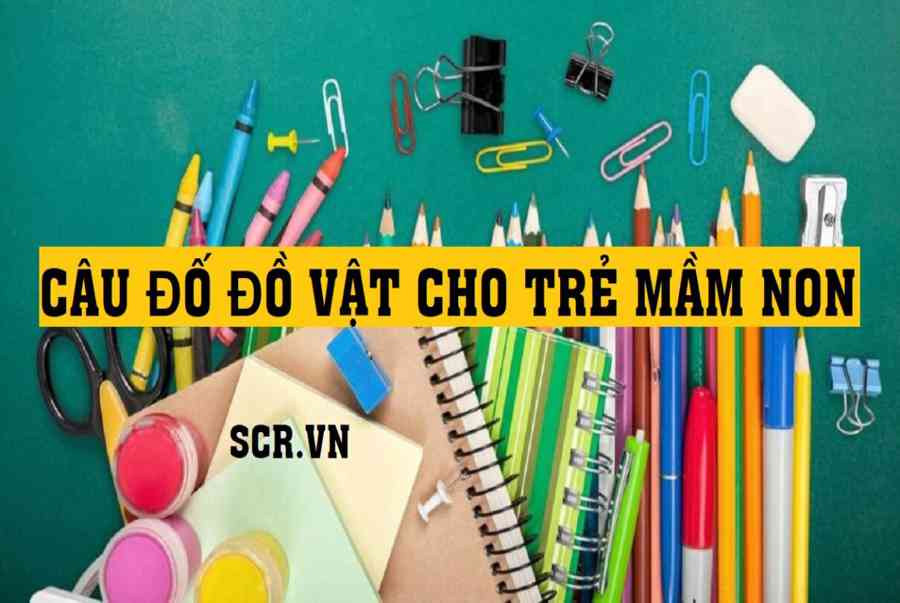” Thời sự ” đổi hướng tới đây. Đối với những định nghĩa khác, xem Thời sự ( khuynh hướng )

Phòng Tin tức tiếng Anh Al Jazeera, Doha, 2008
Tin tức là thông tin về các sự kiện hiện tại. Điều này có thể được cung cấp thông qua nhiều phương tiện khác nhau: truyền miệng, in ấn, hệ thống bưu chính, phát thanh truyền hình, thông tin điện tử hoặc qua lời kể của các nhà quan sát và nhân chứng cho các sự kiện.
Các chủ đề phổ biến cho các báo cáo tin tức bao gồm chiến tranh, chính phủ, chính trị, giáo dục, y tế, môi trường, kinh tế, kinh doanh, thời trang và giải trí, cũng như các sự kiện thể thao, sự kiện kỳ quặc hoặc bất thường. Các tuyên bố của chính phủ, liên quan đến các nghi lễ hoàng gia, luật pháp, thuế, y tế công cộng và tội phạm, đã được mệnh danh là tin tức từ thời cổ đại. Con người thể hiện một mong muốn gần như phổ quát để tìm hiểu và chia sẻ tin tức, điều họ thỏa mãn bằng cách nói chuyện với nhau và chia sẻ thông tin. Sự phát triển công nghệ và xã hội, thường được thúc đẩy bởi các mạng lưới truyền thông và gián điệp của chính phủ, đã tăng tốc độ tin tức có thể lan truyền, cũng như ảnh hưởng đến nội dung của nó. Thể loại tin tức như chúng ta biết ngày nay có liên quan chặt chẽ với báo viết, có nguồn gốc từ Trung Quốc, đóng vai trò như một bản tin và sự lan truyền, với báo và giấy in, đến Châu Âu.
Sự mới lạ[sửa|sửa mã nguồn]
Như tên của nó, ” tin tức ” thường bao hàm việc trình diễn thông tin mới. [ 1 ] [ 2 ] Tính mới của tin tức mang đến cho nó một chất lượng không chắc như đinh, giúp phân biệt nó với những cuộc tìm hiểu cẩn trọng hơn về lịch sử vẻ vang hoặc những ngành học thuật khác. [ 3 ] [ 4 ] Trong khi những nhà sử học có khuynh hướng xem những sự kiện là bộc lộ tương quan đến nguyên do của những quy trình cơ bản, những câu truyện tin tức có khuynh hướng diễn đạt những sự kiện một cách cô lập và loại trừ luận bàn về những mối quan hệ giữa chúng. [ 5 ] Tin tức miêu tả rõ ràng quốc tế trong quá khứ hiện tại hoặc ngay lập tức, ngay cả khi những góc nhìn quan trọng nhất của một câu truyện tin tức đã xảy ra từ lâu trong quá khứ hay dự kiến sẽ xảy ra trong tương lai. Để tạo ra tin tức, một quy trình đang diễn ra phải có một số ít ” điểm chốt “, một sự kiện trong thời hạn neo nó đến thời gian hiện tại. [ 6 ] Liên quan, tin tức thường đề cập đến những góc nhìn của trong thực tiễn có vẻ như không bình thường, rơi lệch hoặc khác thường. [ 7 ] Do đó, câu nói nổi tiếng rằng ” Chó cắn người ” không phải là tin tức, mà ” người cắn chó ” sẽ là tin tức. [ 8 ]Một hệ quả khác của tính mới của tin tức là, vì công nghệ tiên tiến mới được cho phép phương tiện đi lại truyền thông online mới thông dụng tin tức nhanh hơn, những hình thức tiếp thị quảng cáo ‘ chậm hơn ‘ hoàn toàn có thể chuyển từ ‘ tin tức ‘ sang ‘ nghiên cứu và phân tích ‘. [ 9 ]
Theo một số ít kim chỉ nan, ” tin tức ” là bất kỳ thứ gì ngành công nghiệp tin tức bán ra. [ 10 ] Báo chí, được hiểu thoáng rộng theo cùng một nghĩa, là hành vi hoặc nghề nghiệp của việc tích lũy và phân phối tin tức. [ 11 ] [ 12 ] Từ góc nhìn thương mại, tin tức chỉ đơn thuần là một nguồn vào, cùng với giấy ( hoặc sever điện tử ) thiết yếu để tạo ra một mẫu sản phẩm ở đầu cuối để phân phối ra thị trường. [ 13 ] Một cơ quan tin tức phân phối tài nguyên này để ” bán sỉ ” và những nhà xuất bản nâng chất lượng của nó lên để kinh doanh nhỏ. [ 14 ] [ 15 ]
Hầu hết những nhà sản xuất giá trị tin tức vô tư, trung lập và khách quan, mặc dầu khó hoàn toàn có thể đưa tin mà không thiên vị về mặt chính trị. [ 16 ] Nhận thức về những giá trị này đã đổi khác rất nhiều theo thời hạn khi ‘ báo chí truyền thông lá cải ‘ chuyên đưa tin giật gân đã trở nên thông dụng. Michael Schudson đã lập luận rằng trước kỷ nguyên của Thế chiến I và sự ngày càng tăng đồng thời của tuyên truyền, những nhà báo không nhận thức được khái niệm rơi lệch trong đưa tin, chưa nói đến việc tích cực thay thế sửa chữa tin sai. [ 17 ] Tin tức đôi lúc cũng được cho là miêu tả thực sự, nhưng mối quan hệ này là khó chớp lấy và đạt chuẩn mực. [ 18 ]Nghịch lý thay, một gia tài khác thường được quy cho tin tức là chủ nghĩa giật gân, tập trung chuyên sâu không phù hợp vào, và phóng đại, câu truyện cảm hứng cho tiêu dùng công cộng. [ 19 ] [ 20 ] Tin tức này cũng không tương quan đến tin đồn thổi, thực tiễn con người san sẻ thông tin về những người khác cùng chăm sóc. [ 21 ] Một chủ đề giật gân phổ cập là đấm đá bạo lực ; do đó, một thành ngữ cho tin tức khác nói rằng ” nếu tin có chảy máu, tin sẽ lên số 1 “. [ 22 ]
Tin tức đáng chăm sóc[sửa|sửa mã nguồn]
Tin tức được định nghĩa là một chủ đề có đủ sự tương quan đến công chúng hoặc người theo dõi đặc biệt quan trọng để bảo vệ sự chú ý quan tâm hoặc đưa tin của báo chí truyền thông. [ 23 ]Nhiều giá trị tin tức có vẻ như là phổ cập trên những nền văn hóa truyền thống. Mọi người có vẻ như chăm sóc đến tin tức ở mức độ mà nó có ảnh hưởng tác động lớn, miêu tả những xung đột, xảy ra gần đó, tương quan đến những người nổi tiếng và đi chệch khỏi những quy tắc xảy ra hàng ngày. [ 24 ] Chiến tranh là một chủ đề tin tức phổ cập, một phần vì nó tương quan đến những sự kiện chưa biết mà hoàn toàn có thể gây nguy khốn đến từng cá thể. [ 25 ]
- ^
Stephens, History of News (1988), p. 13.
- ^
Smith,The Newspaper: An International History (1979), p. 7. “In the information which [the newspaper] chose to supply, and in the many sources of information which it took over and reorganized, it contained a bias towards recency or newness; to its readers, it offered regularity of publication. It had to be filled with whatever was available, unable to wait until information of greater clarity or certainty or of wider perspective had accumulated.”
- ^ The Newspaper and the Historian (1923), p. 10. Salmon quotes Gazette is the reflection of feelings and rumors of the time which may or may not be true.”Salmon, ( 1923 ), p. 10. Salmon quotes Théophraste Renaudot : ” History is the record of things accomplished. Ais the reflection of feelings and rumors of the time which may or may not be true. “
- ^
Pettegree, The Invention of News (2014), p. 3. “Even as news became more plentiful in the sixteenth and seventeenth centuries, the problem of establishing the veracity of news reports remained acute. The news market—and by the sixteenth century it was a real market—was humming with conflicting reports, some incredible, some all too plausible: lives, fortunes, even the fate of kingdoms could depend upon acting on the right information.”
- ^ Park, ” News as a Form of Knowledge ” ( 1940 ), pp. 675 – 676. ” News is not history because, for one thing among others, it đơn hàng, on the whole, with isolated events and does not seek to relate them to one another either in the form of causal or in the form of teleological sequences. ”
- ^
Schudson, “When? Deadlines, Datelines, and History”; in Reading The News (1986), ed. Manoff & Schudson; pp. 81–82.
- ^
Shoemaker & Cohen, News Around the World (2006), pp. 13–14.
- ^
Park, “News as a Form of Knowledge” (1940), p. 678.
- ^
Stephens, History of News (1988), p. 56. “It is axiomatic in journalism that the fastest medium with the largest potential audience will disseminate the bulk of a community’s breaking news. Today that race is being won by television and radio. Consequently, daily newspapers are beginning to underplay breaking news about yesterday’s events (already old news to much of their audience) in favor of more analytical perspectives on those events. In other words, dailies are now moving in the direction toward which weeklies retreated when dailies were introduced.”
- ^
Heyd, Reading newspapers (2012), pp. 35, 82. “… newspapers were defining what news was, categorizing and expanding their domain on the fly. Indeed, Somerville argues that ‘news’ is not an objective ‘historical’ concept but one that is defined by the news industry as it creates a commodity sold by publishers to the public.”
- ^
Stephens, History of News (1988), p. 3. “The term journalism is used broadly here and elsewhere in the book to refer to more than just the production of printed ‘journals’; it is the most succinct term we have for the activity of gathering and disseminating news.”
- ^
Shoemaker & Cohen, News Around the World (2006), p. 7. “[…] for the journalist the assessment of newsworthiness is an operationalization based on the aforementioned conditions. In other words, the practitioner typically constructs a method for fulfilling the daily job requirements. He or she rarely has an underlying theoretical understanding of what defining something or someone as newsworthy entails. To be sure, individual journalists may engage in more abstract musings about their work, but the profession as a whole is content to apply these conditions and does not care that the theory behind the application is not widely understood. Hall (1981, 147) calls news a ‘slippery’ concept, with journalists defining newsworthiness as those things that get into the news media.”
- ^
Pettegree, The Invention of News (2014), p. 6. “News fitted ideally into the expanding market for cheap print, and it swiftly became an important commodity.”
- ^
Boyd-Barrett & Rantanen, The Globalization of News (1998), p. 6. “News agency news is considered ‘wholesale’ resource material, something that has to be worked upon, smelted, reconfigured, for conversion into a news report that is suitable for consumption by ordinary readers. It has also suited the news agencies to be thus presented: they have needed to seem credible to extensive networks of ‘retail’ clients of many different political and cultural shades and hues. They have wanted to avoid controversy, to maintain an image of plain, almost dull, but completely dependable professionalism.”
- ^
Phil MacGregor, “International News Agencies: Global eyes that never blink”, in Fowler-Watt & Allan (eds.), Journalism (2013).
- ^
Heyd, Reading newspapers (2012), pp. 36–37.
- ^
Schudson, Discovering the News (1978), p. 6. “Before the 1920s, journalists did not think much about the subjectivity of perception. They had relatively little incentive to doubt the firmness of the reality by which they lived. […] After World War I, however, this changed. Journalists, like others, lost faith in the democratic market society had taken for granted. Their experience of propaganda during the war and public relations thereafter convinced them that the world they reported was one that interested parties had constructed for them to report. In such a world, naïve empiricism could not last.”
- ^
Allan, News Culture (2004), pp. 46–47.
- ^
Stephens, History of News (1988), p. 2. “Sensationalism appears to be a technique or style that is rooted somehow in the nature of the news. News obviously can do much more than merely sensationalize, but most news is, in an important sense, sensational: it is intended, in part, to arouse, to excite, often—whether the subject is a political scandal or a double murder—to shock.”
- ^
Jesper Strömbäck, Michael Karlsson, & Nicolas Hopmann, “Determinants of News Content: Comparing journalists’ perceptions of the normative and actual impact of different event properties when deciding what’s news”. Journalism Studies 13.5–6, 2012.
- ^
Stephens, History of News (1988), pp. 26, 105–106.
- ^
Allan, News Culture (2004), p. 202.
- ^ “definition of newsworthiness by the Free Online Dictionary, Thesaurus, and Encyclopedia”. Thefreedictionary.com .
- ^
Stephens, History of News (1988), p. 33.
- ^
Stephens, History of News (1988), p. 31.

 Phòng Tin tức tiếng Anh Al Jazeera, Doha, 2008
Phòng Tin tức tiếng Anh Al Jazeera, Doha, 2008



